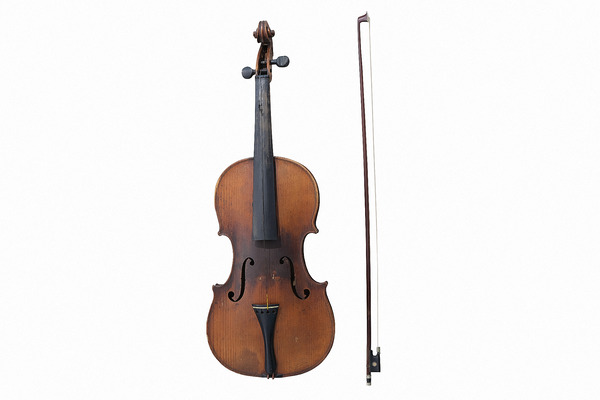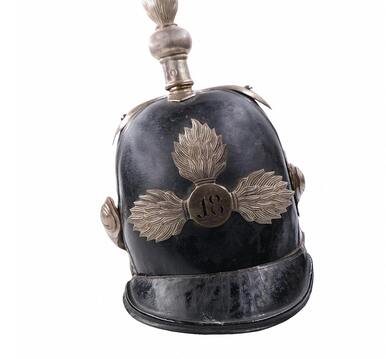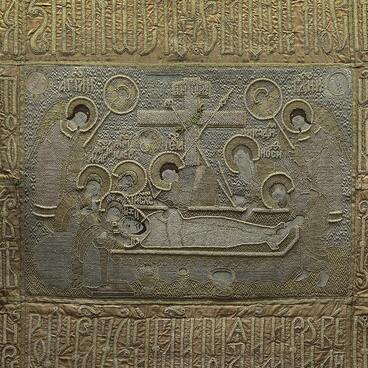An old Bavarian violin is kept in the collection of the Kargopol History, Architecture and Art Museum. The valuable instrument was made in the 19th century based on the work of the famous European master — George Klotz.
This information is preserved on a label inside the violin case. There is an inscription “Copie de George Cloz Mitenvald in Bayern”, which can be translated as “Copy of George Klotz, Mittenwald in Bavaria”.
The short line on the label reveals a lot. The instrument is made in the German city of Mittenwald, which is known as the city of the best violins in Europe. The founder of the production is considered to be Matthias Klotz, who studied the violin craft from the Italians — perhaps from the legendary Amati family. This dynasty worked in the city of Cremona, at one point in history their small violins with a clear and gentle sound became famous throughout Europe.
In 1683, Matthias Klotz returned to his homeland and opened his own production. His sons continued the successful business. The eldest son was the aforementioned George Klotz, he was born four years after his father returned from Italy. Over time, the magnificent instruments of this Bavarian dynasty have gained the worldwide recognition.
High demand helped the division of labor in this industry: many locals began to specialize in working with parts of violins by making cases, cutting violin necks and curls, creating pegs (parts for fixing and tensioning strings), stands. In the late 18th century, the handicraft production of musical instruments turned into the factory one.
Judging by the label, the violin from the museum’s collection was made at one of Mittenwald’s manufactories based on the patterns of old works by George Klotz. At the same time, the bow to it was created in a completely different city and even in another country: it was made by the French master Jean-Baptiste Vuillaume in Paris.
Vladimir Yelizarov, a resident of Kargopol, donated the violin to the museum’s collection. He was married to Anna Litusova, a representative of an old Kargopol family. The man recalled what he knew from the words of his late wife: the only person who played music in their family was a postal employee Ivan Markhilevich.
The family did not have much information about him. It is known that at one point he also became related to the Litusovs — his wife was Maria Gavrilovna, born in 1880, aunt of Anna Litusova. For some time, the family lived in the Vytegorsk Uyezd of the Olonets province. Ivan Markhilevich died in the early years of the Soviet regime. His widow moved to the Chelyabinsk region and, apparently, did not take the violin with her.
This information is preserved on a label inside the violin case. There is an inscription “Copie de George Cloz Mitenvald in Bayern”, which can be translated as “Copy of George Klotz, Mittenwald in Bavaria”.
The short line on the label reveals a lot. The instrument is made in the German city of Mittenwald, which is known as the city of the best violins in Europe. The founder of the production is considered to be Matthias Klotz, who studied the violin craft from the Italians — perhaps from the legendary Amati family. This dynasty worked in the city of Cremona, at one point in history their small violins with a clear and gentle sound became famous throughout Europe.
In 1683, Matthias Klotz returned to his homeland and opened his own production. His sons continued the successful business. The eldest son was the aforementioned George Klotz, he was born four years after his father returned from Italy. Over time, the magnificent instruments of this Bavarian dynasty have gained the worldwide recognition.
High demand helped the division of labor in this industry: many locals began to specialize in working with parts of violins by making cases, cutting violin necks and curls, creating pegs (parts for fixing and tensioning strings), stands. In the late 18th century, the handicraft production of musical instruments turned into the factory one.
Judging by the label, the violin from the museum’s collection was made at one of Mittenwald’s manufactories based on the patterns of old works by George Klotz. At the same time, the bow to it was created in a completely different city and even in another country: it was made by the French master Jean-Baptiste Vuillaume in Paris.
Vladimir Yelizarov, a resident of Kargopol, donated the violin to the museum’s collection. He was married to Anna Litusova, a representative of an old Kargopol family. The man recalled what he knew from the words of his late wife: the only person who played music in their family was a postal employee Ivan Markhilevich.
The family did not have much information about him. It is known that at one point he also became related to the Litusovs — his wife was Maria Gavrilovna, born in 1880, aunt of Anna Litusova. For some time, the family lived in the Vytegorsk Uyezd of the Olonets province. Ivan Markhilevich died in the early years of the Soviet regime. His widow moved to the Chelyabinsk region and, apparently, did not take the violin with her.



